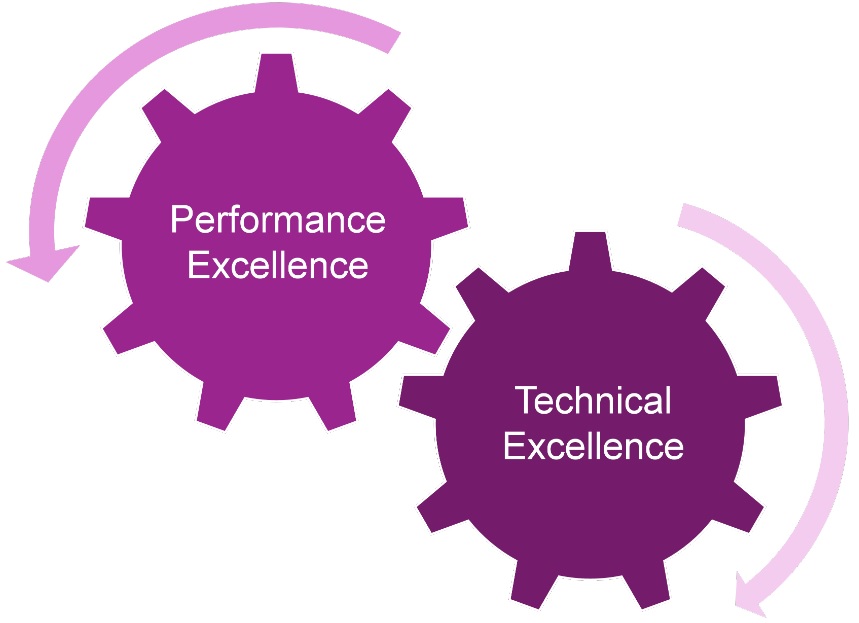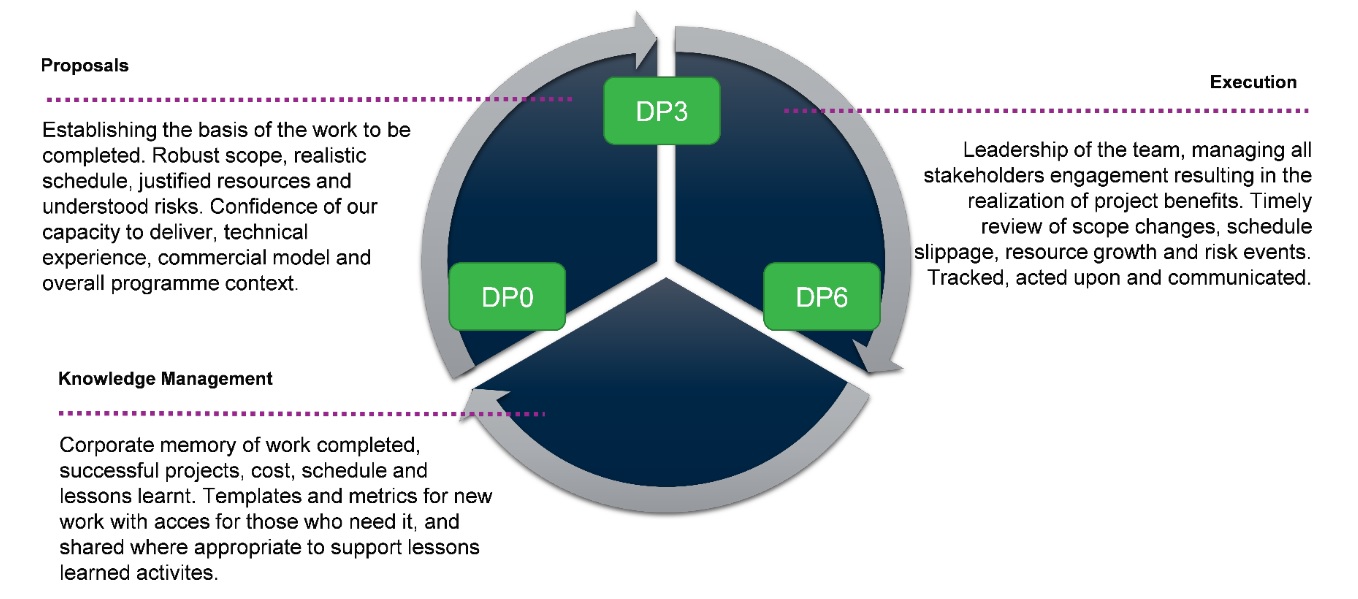
QinetiQ offer our customers world-class expertise in advice, services (particularly test and evaluation) and innovative technology-based products. With over 6,000 people dedicated to being on the side of their customers. We deploy our scientific and technological knowledge, proven research capabilities and unique, purpose-built facilities to provide both services and products that meet the needs of a wide range of global customers. We operate primarily in the defense, security and critical national infrastructure markets.

To guide and assure the technical quality of QinetiQ’s output we deploy our Technical Excellence team (Figure 1) and to guide and assure the project delivery, a complementary team called Performance Excellence is headed by the Group Director for Project and Programme Management. These two teams work in collaboration to maintain our world class reputation.
Project lifecycle
Like many organization we operate an Assurance framework project lifecycle with Decision Points (DP) or gates to control work flow, Figure 2 shows the high level phases of this lifecycle. DP0 is the start of the lifecycle which will begin the process to qualify an opportunity, triage the proposal, develop the tender and submit an innovative, compliant technical solution supported by robust Project Management resources and planning. This is the opportunity for our Performance Excellence functions, including Project Management, Scheduling, Cost Estimating and Risk Management to ensure that any project, which could result from a proposal, will be deliverable to scope, time and cost. For example, we utilize a schedule integrity technology to sample the proposed delivery schedule. The central Performance Excellence team play a critical independent role of assurance having no vested interest in the proposal.
A successful proposal will generate a contract for work and following mobilizations the successful execution of the project is dependent on the Project team and their application of the project systems support by Performance Excellence. Using analytical techniques embedded in our systems to monitor the performance of the project, our Project professionals consider critical adjustments through Risk Management and Change Control. The Project Manager and their technical team monitor progress against the start-up baseline, the Project Manager is able to adjust the course of the project to increase the confidence of a successful project outcome for all parties.








































